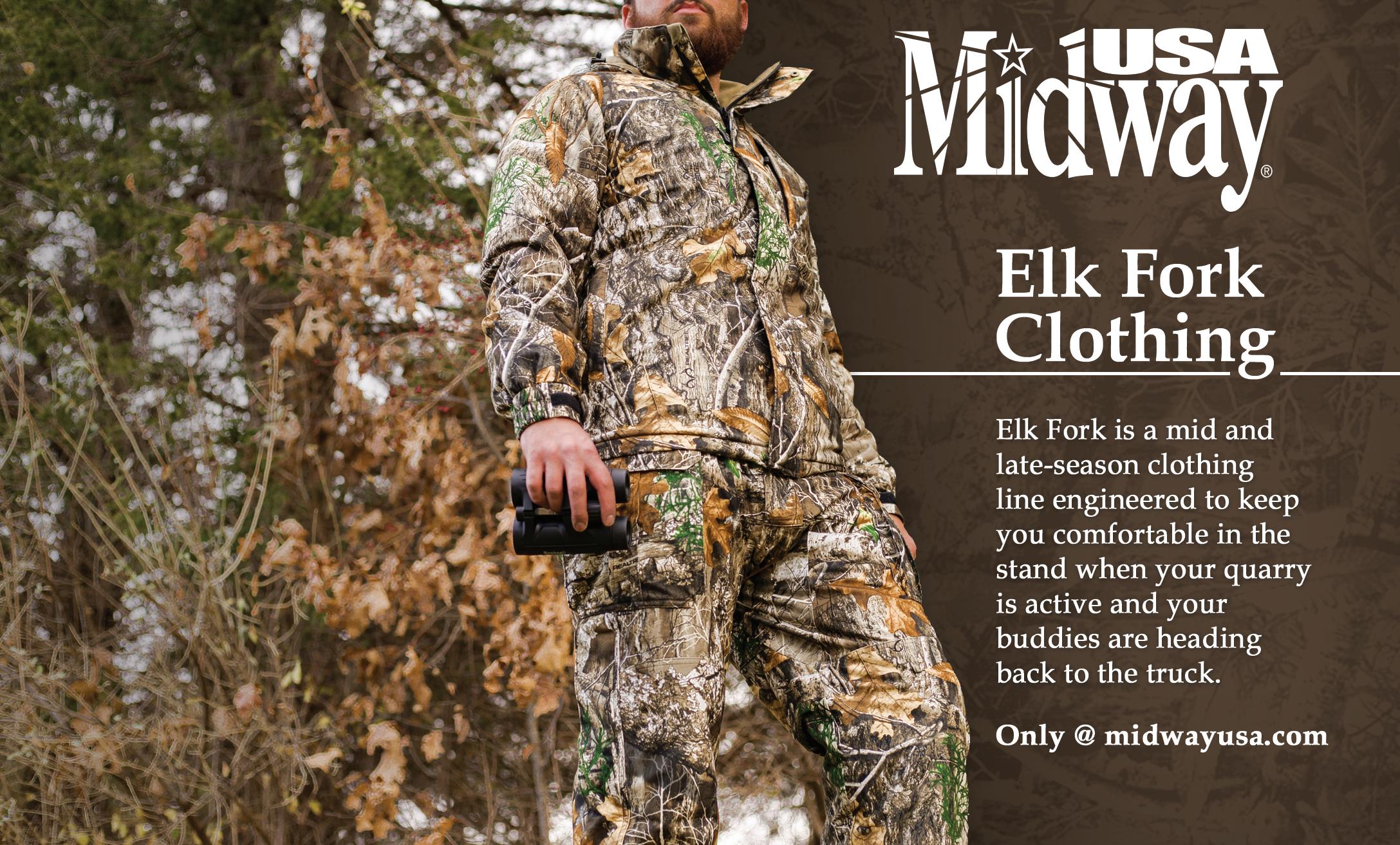
22 minute read
How a Native Garden Grows
My parents still live in the house I grew up in. It is your typical suburban brick ranch surround by what I call “a sacred yard.” Not just any grass grows there—as my father would proudly remind you, it is zoysia grass. Dad had painstakingly plugged the yard with zoysia plugs when I was in grade school. The polkadotted lawn was favorite conversational fodder for kids on the school bus during the two years it took for the dots to grow together. You were always kind to the grass. You didn’t walk on it when it was wet, frosty, or right after it was mowed.
The only native plants in the yard were an ash tree in the front and an eastern red cedar on the corner of the house that is painstakingly trimmed to look like a tall dollop of ice cream, depriving it of most of its berries and value to wildlife. Once upon a time there were three silver maples we used as bases in softball, but one by one they were judged unworthy and removed. There wasn’t much for nature.
In a small semi-circular bed at the end of a brick path, Dad would sow marigold seeds he’d collected from the plants in the bed the previous fall. Each year he would trim the round cedar and de-thatch the zoysia. In between our yard and the neighbors, the spring rains would create a channel where even his tentacle grass couldn’t mount an effective defense to erosion, thus hauling in dirt to fill that area was also an annual occurrence.
The yard remained in this state for almost 40 years. After the winter of 2013/2014 and the devastatingly low count of overwintering monarchs from Mexico, I started working on conservation efforts to increase habitat for monarchs and other pollinators, and needed help with my son’s childcare. One day my dad said to me, “What is going on with the monarch?” At the time I thought he was really just trying to ascertain why his babysitting duties had increased.
After I went through the population decline and the loss of habitat, he commented on how awful it would be to lose the monarch. Dad shared that in his youth he would lay in his backyard and watch them flyover during migration. I can only imagine what a sight that was when the population was large and we did not yet know where their winter grounds were.
Two days later dad called and began the conversation with, “I don’t want us to lose the monarch, what can I do in my yard to help them?” After a pause and a deep breath, I slowly explained he would have to plant native plants, including milkweed, in his yard. Another lengthy pause. He was going to think about it. I was sure that was the last I would hear from him on the subject.
Two days later the phone rang. “I have a spot where you can plant whatever you want to help the monarch. Come over and take a look.” Fully expecting a dedicated flowerpot or an uninhabitable, rock-filled location, I went to see what he was thinking. To my surprise, he pointed to the entire length of the neighbor’s fence, the site of annual erosion battle. “I’m tired of filling in this area in every year. You can plant anything you want here.”
That fall I put in a few native plants and spread some seeds. The spiderwort (Tradescantia ohiensis) at the front, along with swamp milkweed (Asclepias incarnata) and some brown-eyed Susans (Rudbeckia triloba) held back the spring runoff enough to give the seeds and plants a chance. Dad never said much about it that spring, but maybe an occasional shrug or nod I took to mean he wasn’t too sure about this but we would see. He was happy he didn’t have to haul in any dirt that year.
In July my phone rang. It was Dad. “I have a monarch in my yard!” The next day he had two. A month later he had five. He would revel in the caterpillars and would call for me to come and check for eggs. He now talked about that strip of natives frequently and fondly. When the swamp milkweed bloomed, he asked how he could get some more of that “beautiful pink flower.” It remained his favorite plant each year and he would anxiously await its bloom. A short-lived perennial, about 3-5 years, it’s been added and replaced it a couple times as its absence from the planting wouldn’t have been tolerated.
Now in year five, the sweet coneflower (Rudbeckia subtomentosa) and the ox-eye sunflower (Heliopsis helianthoides) have taken a large presence, but Dad didn’t mind. They were tall enough he could watch the pollinators at almost eye level. If a tree tried to grow up in the planting, he would call for me to come over and get it out right away. The common milkweed (Asclepias syriaca) stayed strong along with the butterflyweed (Asclepias tuberosa), which grows near the Joe-Pye weed (Eutrochium purpureum).
Over this just past 4th of July weekend family gathering, I was talking to Dad about this article, and he again gave a lot of nods and a proud smile over his little strip of beautiful pollinator habitat. “Does columbine grow here?” he asked. “It does Dad. Where would you like me to plant some this fall?” He nodded. We decided on a place in one of his formal beds where I would be allowed to displace some geraniums with columbine. I secretly harbored joy over more natives in his yard.
That was the last time I would see my father alive. He passed away the morning of July 8th. Dad’s garden still grows and the butterflies still visit. There will be columbine next spring and swamp milkweed in the summer. The monarchs will refuel on their long journey to Mexico this fall and American Goldfinches continue to visit, looking for seeds.
Doug Tallamy, author of Bringing Nature Home, says, “A plant that has not fed anything has not done its job.” A native plant garden readily feeds pollinators and wildlife. These plants also feed our hearts and souls, connecting us to nature and to each other in unique and lasting ways.
Mary Nemececk
President of Burroughs Audubon
Monarch butterfly on swamp milkweed. (Photo: Mary Nemecek)
Growing up with Conservation
Igrew up in the outdoors. Born and reared on a cotton farm in 1949 in the fertile Mississippi River delta country of southeast Missouri amidst gigantic bald cypress and world-class burr oaks, nature quickly became a part of my everyday life.
My father and grandpa cleared 120 acres of cypress trees with crosscut saws and axes. They pulled stumps with a pair of mules. Life proved difficult, but they preserved and proclaimed that hard work and ingenuity could conquer anything.
An important part of their ingenuity included providing for their families through hunting and fishing. Their adjoining farms bordered the Black Bayou on the south, which flowed into the Mississippi River several miles away. The bayou and bordering woods provided a constant food source of fish and small game.
The fish and wildlife I came into contact on the farm almost every day of my early life made a grave impression on me. I soon understood that I could make a meaningful contribution to the family by cutting cane poles from the wild cane patch that served as the north border of our farm. I rigged the poles with heavy staging, a weight and strong hooks. Giant earthworms were easy to find by merely turning the black soil with a spade. With a coffee can of worms and my canoe poles in hand, I headed to the bayou at every opportunity to catch bass, crappie, big bluegill, catfish and carp for the dinner table. I could tell that my dad was pleased with my efforts.
Cottontail rabbits abounded in the fields and the weedy growth surrounding our hog pens. One of my fondest memories growing up comes from the many frosty mornings when I would call my beagle, Rowdy, and head out back for a rabbit hunt. Rowdy's life centered around chasing rabbits and I learned to love the sound of his yodeling voice when he was on a hot trail.

Cottontail rabbits abounded in the fields and the weedy growth surrounding Bill’s hog pens growing up. (Photo: Courtesy of Bill Cooper)
We shared in the excitement when I managed to shoot a rabbit that he had pushed by me. I'd hold the rabbit's limp, warm body in my hand and allow him to thoroughly nose it and waft the heavy rabbit scent into his flaring nostrils.
A bit of sadness overwhelmed me each time I took a rabbit. I often watched them play and scamper around the old farm equipment near our cypress board farmhouse. I laughed at their antics and marveled at their keen sense of survival. However, when it came time for a rabbit hunt, I realized the rabbits Rowdy and I brought home would serve up nicely with mom's biscuits and gravy.
My love and understanding of the fish and wildlife resources around the farm grew with each passing season. My dad loved the land and respected all that it provided. Each time I left the house searching for rabbits, squirrels or fish, my dad reminded me to mind my manners, follow the rules, and be safe and have fun. Seventy years later, his instructions still ring true.
Bill Cooper
Tips for Early Season Processing
For those who process your deer, early season can be tricky. Here are some tips to make sure your meat is not tainted.
Living in Missouri, or anywhere in the Midwest, means summer hangs around until early October. Archery season opens September 15th every year, and temperatures are usually in the high 80s or low 90s, which makes it miserable to hunt in sometimes.
But, if you have deer patterned, it can be the easiest time to fill your buck tag. The issue comes after the harvest. Use these steps to ensure the meat is usable and delicious.
1. Field Dress ASAP—Once you recover your deer, field dress it immediately. Allowing the meat to cool is paramount in preventing bacterial growth. Remove the internal organs as soon as you are able, and you will prevent a lot of issues.
2. Get it on Ice—Once you have the deer field dressed and back to your processing location, fill the cavity with a bag of ice or two. Most of the time, harvests will occur in the waning hours of light, so I usually ice my deer down and start the processing in the morning when I am rested. Also, once you get the deer quartered and select cuts removed, ice them down immediately. You can get away with no ice in November, but not in September.
3. Remove the Hide—It is all about getting the deer cooled down in the early season. Along with field dressing, removing the hide is a great way to start the cooling process. The hide traps heat—and heat means bacterial growth.
4. Find it Quickly—This may not be possible, but if you hit a deer and it does not fall within eyesight, do everything in your power to recover the deer that night. Leaving it sit will render the meat useless, most of the time in the early season. Use buddies or whatever resources you have to get your deer.

Cooling down the meat as quickly as possible is key to save your early season venison. (Photo: Matt Miles)
5. Pick your Shot—This is probably the easiest advice but the hardest to implement for most folks. Pick where you want the arrow to hit your deer. Even limit your range to ensure a quick kill. Taking marginal shots is not what you want early in the year (or ever, honestly). If you hit the deer in the gut, imagine the flood of bacteria and stomach contents entering the blood stream? Make sure you have a good angle and can hit the deer to put it down as quickly as possible.
These tips should help with the care of your early season venison. Good luck out there is year.
Ryan Miloshewski
Governor Parson Signs Share the Harvest Bill to Include Shelf-stable Venison
The Conservation Federation of Missouri's (CFM) Share the Harvest program will expand to include shelf-stable venison in the years to come as Governor Mike Parson signed HB 1711 on Tuesday, July 14th. The bill will allow shelfstable venison to be utilized in more ways across the state to feed hungry Missourians.

The previous statute stated that the deer meat must be frozen and packaged. This bill allows it to be frozen or packaged in a shelf-stable manner such as snack sticks. As the statute states, only deer meat will be allowed to be donated to the highly successful Share the Harvest program administered by CFM.
"CFM has successfully run the program for almost 30 years, but not without the help of so many partners, including the Missouri Department of Conservation (MDC), Feeding Missouri and their food banks, and other private business donors. We are looking forward to working with these partners to expand the program to include shelf-stable deer meat," said Tyler Schwartze, Executive Director of CFM.
CFM, MDC, and Feeding Missouri, along with all our partners thank the thousands of Missouri deer hunters who donated 348,535 pounds of venison to the state's Share the Harvest program this past deer season. We also thank the more than 100 participating meat processors who grind the donated deer meat into ready-to-use packages.
Since the program was started in 1992, it has provided more than 4.3 million pounds of lean, healthy venison to feed hungry Missourians, which included 6,795 whole deer last season. At a quarter-pound per serving, that's over 17 million meals that generous Missouri deer hunters provide to their neighbors, since the meat stays within the local community where it’s donated. We are excited to see the program expand to include shelf-stable venison to help feed people across Missouri. Being able to include protein-rich meat to the backpacks of school children in need is just another way Missouri hunters can support their neighbors," says Scott Baker, Feeding Missouri's Executive Director.
The Conservation Federation of Missouri, which celebrates its 85th anniversary this year, was founded by a citizen-led effort to keep politics out of conservation and preserve our state's rich outdoor heritage. This effort that started in 1935, has pushed Missouri to be the top state in the nation for conservation. CFM, the voice for Missouri outdoors, is the watchdog over politicians and state agencies to ensure the conservation of our wildlife and natural resources, and will continue to do just that with programs like Share the Harvest.
For more information about the Conservation Federation of Missouri, and to support Share the Harvest, or to join in their citizen-led effort, visit www.confemdo.org.
MISSOURI DEPARTMENT OF CONSERVATION
The Missouri Department of Conservation’s (MDC) new Migratory Bird and Waterfowl Hunting Digest for the 2020-2021 hunting season is now available where permits are sold and online. Learn more about waterfowl hunting in Missouri and view the hunting digest online at huntfish.mdc.mo.gov/hunting-trapping/species/ waterfowl.
The handy, free guide has detailed information on needed permits and duck-stamp requirements, hunting seasons and limits, hunting areas, regulations, and more.
New points of note for the upcoming season include:
• The cost of nonresident hunting permits has gone up. The last time permit prices were raised was in 2009.
• The bag limit for scaup is now two (both species combined) for the first 45 days of the season in each zone. For the last 15 days of the season in each zone, the bag limit is one scaup. Possession limits also follow this pattern.
• Due to spring flooding, some conservation areas may have sections closed for repair and/or have reduced habitat for dove and waterfowl hunting. For an update on conditions at managed waterfowl hunting areas, search “preseason wetland area status” beginning in August at mdc.mo.gov.
• The COVID-19 pandemic may impact how waterfowl drawings are conducted this year and potentially in the future. MDC is committed to providing hunting opportunities, and any adjustments to drawing procedures will be communicated as soon as possible.

Buy Missouri hunting and fishing permits from numerous vendors around the state, online at huntfish.mdc.mo.gov/permits, or through MDC’s free mobile app, MO Hunting, available for download through Google Play or the App Store.
Get Fall Deer and Turkey Hunting Info from New MDC Booklet
Missouri deer and turkey hunters can get the most current information on upcoming fall hunting from the Missouri Department of Conservation’s (MDC) 2020 Fall Deer and Turkey Hunting & Regulations Information booklet, available where permits are sold and online at huntfish.mdc.mo.gov/fall-deer-and-turkey-huntingregulations-and-information.
The booklet has detailed information on fall deer and turkey hunting seasons, limits, permits, managed hunts, regulations, conservation areas to hunt, post-harvest instructions, chronic wasting disease (CWD) updates, and more.
Changes for the upcoming season include:

• Flood-prone areas in southeast Missouri are closed to hunting, except waterfowl, during deer and turkey seasons when river levels exceed certain limits. • To slow the spread of CWD, there are new carcass transportation regulations. • Clark County has been added to the CWD Management Zone. • During Nov. 14–15, hunters who harvest a deer in the CWD Management Zone must take it on the day of harvest to a CWD sampling station. MDC is monitoring the COVID-19 pandemic and will re-evaluate by Nov. 1 mandatory CWD sampling requirements. For the latest information, please visit mdc.mo.gov/cwd. • The antler-point restriction has been removed for Clark County and inside the Columbia city limits. • Nonresident permit prices have gone up. • Hunters may no longer use a Firearms Antlerless Deer Hunting Permit in Atchison County. • Hunters may now fill two Firearms Antlerless Deer Hunting Permits in Lincoln and Montgomery counties, and in Cass County outside the urban zone. • To qualify for no-cost resident landowner permits, you now must own at least 20 acres in one contiguous tract. • Nonresidents who own at least 75 acres in one contiguous tract in Missouri may now buy deer and turkey hunting permits at reduced prices. • To get landowner permits, you must submit information about your property by filling out a Landowner Permit Application. • Qualifying landowners may now receive two Resident Landowner Firearms Antlerless Deer Hunting Permits in Newton County. • Archery Antlerless Deer Hunting Permits may now be used in Scott County. • New managed deer hunts have been added, and others have been removed or modified. • Deer hunting regulations have changed for some conservation areas. • A limited elk hunting season will be held in Carter, Reynolds, and Shannon counties. • There is a new definition for handgun.
Buy Missouri hunting and fishing permits from vendors around the state, online at huntfish.mdc. mo.gov/permits, or through MDC’s free mobile app, MO Hunting, available for download.
MISSOURI DEPARTMENT OF CONSERVATION
First Elk-hunting Season Starts in October
The Missouri Department of Conservation (MDC) Michael Buschjost of St. Thomas, 39, says he is, is offering Missourians the state’s first elk“Pretty darn excited to draw this tag!” His passion hunting season in modern history starting this is bowhunting and he has hunted elk in Montana, October. For the inaugural season, MDC will issue Colorado, and Wyoming with two bulls and a cow elk one permit each to five lucky Missourians randomly harvested from those efforts. He says he is excited to drawn from 19,215 permit applications, including 33 take his three kids with him to scout the area before for one resident-landowner antlered-elk permit and the season opens. “I’m really looking forward to being 19,182 for four general permits. part of this first hunt,” says Buschjost. “A ton of work The five lucky applicants drawn for a permit to harvest one antlered elk in Missouri this fall are: Samuel Schultz of Winfield, 42, has been hunting for • Bill Clark of Van Buren, who was drawn for the 30 years and he mostly hunts deer and turkey. He has resident-landowner antlered-elk permit. hunted small game in the past, done some trapping, • Joseph Benthall of Mount Vernon, who was drawn and loves to fish as well. He has hunted elk before for an antlered-elk general permit. in Colorado back in the early 2000s and says he was • Michael Buschjost of St. Thomas, who was drawn fortunate enough to harvest a 6x6 bull with his bow for an antlered-elk general permit. on a self-guided hunt. “I love that MDC brought elk • Samuel Schultz of Winfield, who was drawn for back to Missouri and I can't wait for the opportunity an antlered-elk general permit. to hunt them,” Schultz says. • Eugene Guilkey of Liberty, who was drawn for an other wildlife. Clark says he applied for the elk hunt elk before. He says he applied for the Missouri opportunity because he has wanted to hunt elk but has not had the time or money for a trip out west. He adds that he will only be rifle hunting. has been done on MDC’s part to make this happen.” antlered-elk general permit. Eugene Guilkey of Liberty, 59, has lived most of his life in northwest Missouri and has hunted since his The five hunters can then each harvest one bull elk youth. Guilkey says he plans to hunt both portions that has at least one antler being a minimum of six and will use a crossbow during the archery portion. inches long. The five hunters may hunt using archery “Growing up in Missouri, I used to hunt rabbit, methods Oct. 17-25 and firearms methods Dec. 12-20. squirrel, quail, and dove, along with deer and turkey. Each permit is valid for both the archery and firearms I have never hunted elk,” Guilkey says. “I suppose portions of the elk-hunting season. the cost of a trip like that kept me from pursuing More on those drawn: Bill Clark of Van Buren, 78, my battle and recovery, I found an elk-hunting show is a life-long hunter of deer, turkey, and small game. on television that only hunts public land. I thought He and his family own 80 acres east of Peck Ranch perhaps one day I could do that… and now I can! At Conservation Area where they conduct timber-stand this time last year, I was given the news I had cancer. improvements on the heavily forested property Now, a year later, I’ve been given the opportunity of a and also plant clover and native grasses for elk and lifetime! Thank you for the chance!” because he supports MDC’s elk restoration and Bill Clark of Van Buren, Joseph Benthall of Mount management efforts, wildlife management, and wants Vernon, Michael Buschjost of St Thomas, Samuel to help the herd by thinning a bull. Schultz of Winfield, and Eugene Guilkey of Liberty Joseph Benthall of Mount Vernon, 37, has been deer one antlered elk during Missouri’s first elk season in hunting off and on for 25 years and has not hunted modern history this fall. that dream. I also battled cancer last year, and during were each drawn for a hunting permit to harvest
MISSOURI STATE PARKS
Missouri State Parks Provides Campers with Multiple Contactless Check-in Options During COVID-19 Health Concerns
Campers at Missouri State Parks now have three self-check-in options to utilize as early as the morning of their planned arrival at Missouri State Parks campground. As a result of limited available activities, and the urgency to get outside and away from home, campers were eager to spend a night under the stars. With the expectations of increased visitation, Missouri State Parks, diligently implemented a number of changes related to campground operations to better facilitate appropriate social distancing and improve the safety of operations for Missouri State Parks’ guests and staff. One of these changes is a new contactless self-check-in process – three options that can be completed either from home, on the way to the campground, or upon arrival to the campsite, on the day of their planned arrival.
The first option is pre-check in, which can be completed from any web browser with the camper’s reservation information before leaving home or on the way to the campground the day of the planned arrival. Here’s how:
1. Visit www.icampmo.com. 2. On the homepage, locate the Quick Check- In bar. 3. Enter the confirmation number and customer last name and click check in now. 4. Screen will refresh and you will be successfully checked-in.
The second option is the ability to check in by text message. It’s a simple process and can be completed by sending a text with a confirmation number and last name.
1. Text the confirmation number and customer last name to 573-229-0415. 2. Receive a successful check-in confirmation text.

A third contactless option exists when the camper arrives to the park for those with a smartphone and a camera or QR code reader app.
1. Upon arrival to the park, campers can check in to their campsite at 3 p.m. CST, by canning the QR code posted at the campsite. 2. Some smartphone cameras will recognize the code by simply hovering the camera over the QR code in order to open the browser to check in at www.icampmo.com. If the camera does not read the QR code, the camper will need to download a QR reader from the app store on their device to check in. 3. On the Account Login page, select Click here to Check-In. 4. Enter the confirmation number and customer last name and click check in now. 5. Screen will refresh and you will be successfully checked in.
Missouri State Parks is proud to continue to provide outdoor creational opportunities for visitors, however, campers should expect some changes. Visitors are encouraged to be respectful of others, practice social distancing, avoid crowded areas, and do their part to help keep state parks and historic sites safe and clean.
Visit mostateparks.com for more information.






















